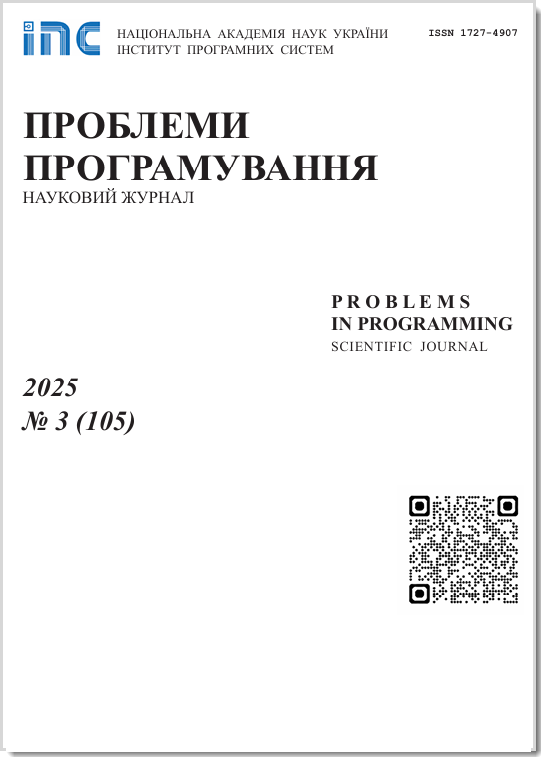Developing algorithms for automatic hypoxing test chasing from the single-channel electrocardiograms: a model experiment
Abstract
As an outcome of the COVID-19 pandemic, there is a need to seek new approaches to patients’ rehabilitation, in particular, the novel monitoring technologies enabling the assessment of the functionality and fitness of the cardiovascular and respiratory systems. Hypoxic tests allow for estimating a person’s tolerability to hypoxic conditions and, eventually, for making conclusions about their fitness. Among these tests are the Stange test for which the breath is held after inhaling, and the Genchi test involving holding the breath after exhaling. The important information is the duration of the breath hold. There are methods of direct respiratory signal measurement and indirect ones to control it. They require the use of specialized equipment and specific conditions, often including the need for patient immobilization, therefore, are usually performed in hospitals. Breathing affects the electrocardiogram, which can be used to reconstruct the respiratory signal. Electrocardiogram registration is now a routine procedure performed in hospitals, outpatient clinics, and, due to various options for modern portable single- and multichannel electrocardiographs, even at home by the patients themselves. There are several types of algorithms for obtaining the cardiorespiratory information that rely on different elements of the electrocardiogram signal but they are not suitable for real-time application. This report describes the model experiment developing the optimal algorithm of hypoxic test automatization with the electrocardiogram processing in real-time conditions. We have developed the software called "Harmony" for breathing control during hypoxic test which suggests the starting moment for breath hold. Since the period of breath hold during hypoxic test has specific characteristics on the electrocardiogram that are substantially different from other breathing phases, such as inhaling, exhaling, and calm breathing, the moment of finishing the breath hold can be determined automatically. This allows us to automate hypoxic tests.
Prombles in programming 2024; 2-3: 173-179
Keywords
Full Text:
PDF (Українська)References
G. Ginche. Sulla capacità polmonare esulla resistenza all'anidride carbonica nell'uomo. Archivio di Fisiologia. 1908, № 7. pp. 113-133.
G. Shtange. Über die Beziehungen zwischen Atmung und Kreislauf beim Menschen, insbesondere über eine neue Methode zur Prufung der Herzkraft. Deutsche Medizinische Wochenschrift 1908. № 41. pp. 1545-1547.
B. Dolynskyi, V. Filipov. Theoretical and methodological means of assessing the level of physical fitness of children in SUP-sport. Olympicus, 2023, № 2. pp. 20-25.
S. Chernenko, O. Honcharenko, S. Marchenko. Informative indicators of functional and motor readiness of students of higher educational institutions. Physical Education Theory and Methodology. 2019, № 19.3. pp. 107-115. CrossRef
H. Tumilovych. The results of the express-estimation of functions of external respiration of patients with chronic kidney disease who are on hemodialysis. Young sports science of Ukraine. 2009. №. 3. pp. 176-180.
A. Kukharchuk. Physical load for patients with long covid - how to calculate it correctly? Medical and biological problems of physical education and sports.
G.B. Moody, R.G. Mark, A. Zoccola, S. Mantero. Derivation of respiratory signals from multi-lead ECG. Computers in Cardiology, 1985. vol. 12. pp. 113-116.
C. Varon, et al. A Comparative Study of ECG-derived Respiration in Ambulatory Monitoring using the Single-lead ECG. Scientific reports. Article number: 5704, 2020. CrossRef
Sz. Buś, K. Jędrzejewski. ECG-Derived Respiration - Complete Implementation and Its Evaluation with Use of Clinical Data. International conference on signals and electronic systems (ICSES - 2018), Kraków, Poland, September 10-12, 2018. pp. 209-213. CrossRef
Shuxin Zhuang et al. Improved ECGDerived Respiration Using Empirical Wavelet Transform and Kernel Principal Component Analysis. Hindawi. Computational Intelligence and Neuroscience. Research Article. vol. 2021, Article ID 1360414, 13 p. CrossRef
P. Janbakhshi, M. B. Shamsollahi. ECGderived respiration estimation from single-lead ECG using gaussian process and phase space reconstruction methods. Biomedical Signal Processing and Control, 2018. pp. 80 - 90. CrossRef
I. Chaikovskyi. Analysis of an electrocardiogram in one, six, and twelve leads from the point of view of information value: electrocardiographic cascade. Clinical informatics and telemedicine. 2012. № 2. pp. 102-106.
А Sharypanov, V. Vyshnevskyi, V. Kalmykov, L. Kizub. Computer program "Automated breathing control technology "Harmony". Certificate of registration of copyright to the work. № 98944, 2020.
DOI: https://doi.org/10.15407/pp2024.02-03.173
Refbacks
- There are currently no refbacks.









